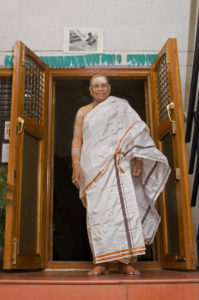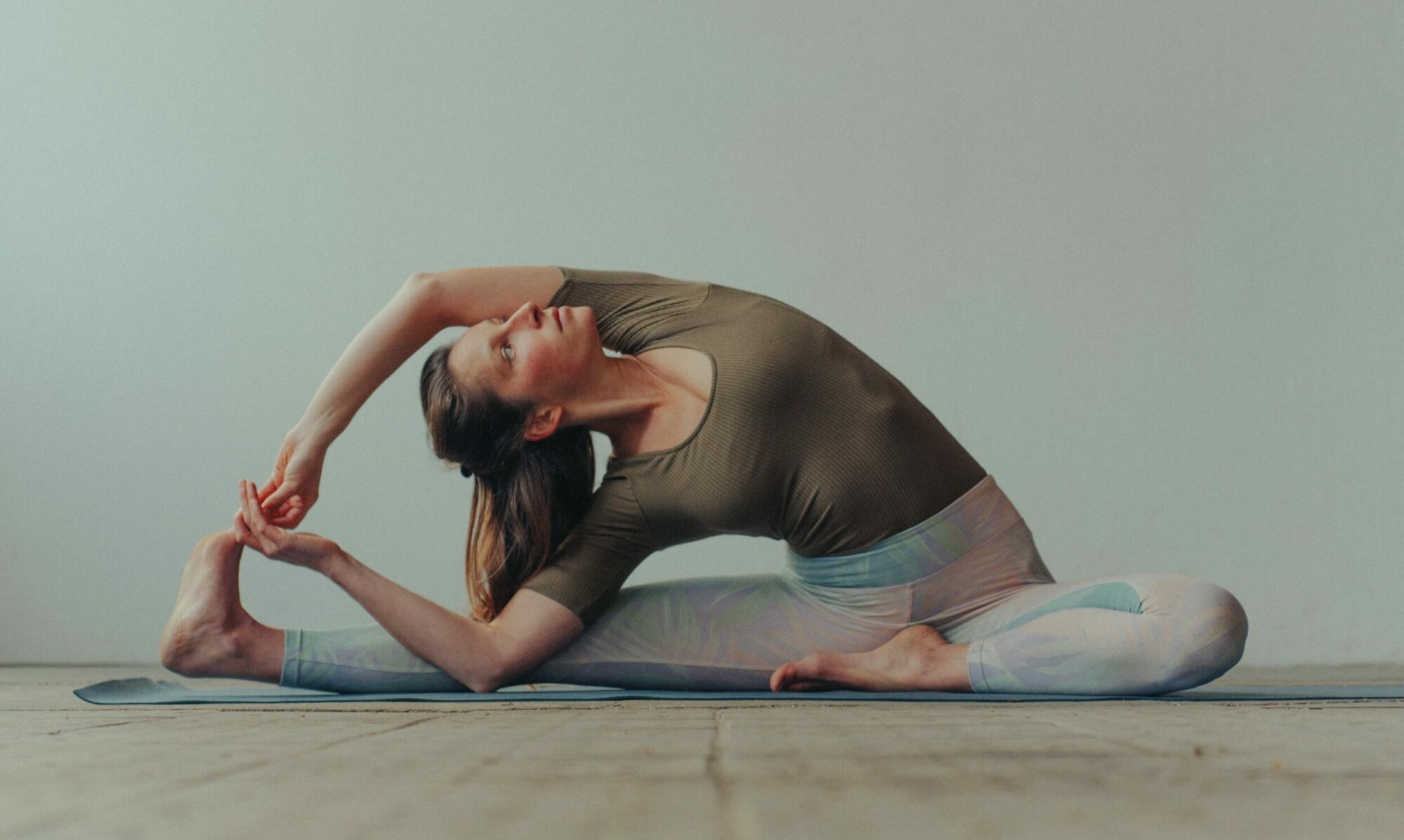
Ashtanga Vinyasa Yoga is the name of the style developed by Pattabhi Jois (1915 – 2009). He was one of Krishnamacharya’s longstanding students from 1927.
He gave him various series, each of which contained specific sequences of asanas and were physically very acrobatic and demanding. Vinyasa describes a sequence of asanas that are linked together by transitional movements and jumps and are also synchronized with the breath.
Pattabhi Jois lived and practiced in Mysore / South India. Gradually, he too was discovered by Americans and Europeans. In 1975, at the age of 60, he began to give yoga seminars in Europe and the USA in response to invitations. He did not market himself in the same way as his colleague Iyengar and only a few pictures and films of him exist. Nevertheless, this style is now one of the leading styles worldwide and is one of the essential foundations for modern lifestyle yoga, with many of today’s fitness yoga styles from America going back to it.
Origin of the rows
One is not quite sure whether the series were possibly sequences described in the Yoga Kurunta (cf. Krishnamacharya’s apprenticeship with Sri Ramamohan Bramachari).
Another version in the literature states that Krishnamacharya himself compiled these from various sources and inspirations for the purpose of intensive physical training for the male youth. This is historically proven insofar as Ling’s gymnastics (Swedish gymnastics) and Danish gymnastics, which were widespread in the British military, were just as popular at the Maharaja’s court as bodybuilding by K.V. Iyer. It is also known that Krishnamacharya visited there and was inspired by it. Moreover, according to Marc Singleton – see The History of Modern Body Yoga – the series are largely identical to those of Danish gymnastics:
” The system emphasized continuous movements, rhythmic exercises and stretching. The Danish gymnastics textbook (Primary Gymnastics, 1925) contained a complete course of stretching and strength-building exercises grouped into six progressive series. The series should be practiced vigorously so that heat is generated in the body. Deep breathing should be practiced during the exercises. The 28 postures in this book alone are extremely similar or identical to those in the “Ashtanga Vinyasa” series. There are even more in the second edition of the book. The transitions between the exercises are also similar to those in Krishnamacharya’s Asana Vinyasa Yoga.”
Unfortunately, Jois himself made little clear statement about the origin of the sources.
He took the guidelines and turned them into his own style. He combined the difficult sequences with
There is a certain fascination with the jumps that are performed, for example, from a push-up forward into a floating position without touching the floor. You may well get the impression that the body’s gravity is being neutralized. It is a result of an intense build-up of energy in the body. The style is extremely body-oriented; it seems as if there is only the body.
What exactly do these rows look like?
Here is an insight into the 4 sequences. However, the series are so difficult that today only Sunprayer A and B and the first series – the “primary series Cikitsaa” – are usually taught.
A short guide through the movie:
In the video, the “military” style of the exact timings 1,2,3,4 … etc. can be observed. The pranayama-ujjayi breathing, which is practiced continuously, is clearly audible. From minute 5: You see here “sunprayer A” This is the basic form of the sun prayer in ashtanga style. There is also a more difficult variation “sunprayer B”. Pattabhi Jois teaches advanced students. In the last quarter of the film, advanced asanas are practiced.
Jois wrote his only book around 1960, the Yoga Malain which he describes the series and his style of practice.
How does he himself describe his yoga in terms of spirituality?
He introduces a quote from Jois (from Ronald Steiner’s website) as follows:“Yoga is what you don’t see. The powerful bodywork of Ashtanga is only the surface of an internal, spiritual path.” Then the quote itself:
“Behind the power of the body is an energy, this is spiritual and this is what keeps us alive. To access the spiritual, you must first understand the physical. This body is our temple and in this temple is Atman – God. “
Let the message and the impression of the images from the Ashtanga yoga practice sink in. In the interviews, Jois is convinced that spirituality can be achieved by practicing physical exercises.
Representative in Germany:
Ronald Steiner He represents the pure form of Ashtanga by Patthabi Jois, but is also a trained Iyengar yoga teacher. On his homepage: you will find everything you need to know about Krishnamacharya and Ashtanga yoga described in a short and understandable way.
Click here for the Ashtanga Yoga practice
Go to page: Swami Sivananda – a great saint of India
Bildquellen
- Pattabhi Jois: Wikimedia Commons | CC BY-SA 4.0 International
